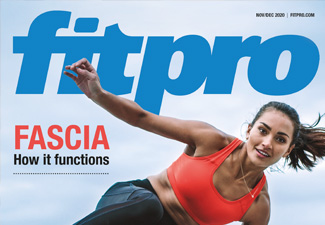Magazine References
Nov – Dec 2020

Pg 6 A tale of two pandemics
References
- Damiot A et al (2020), Immunological implications of physical inactivity among older adults during the COVID-19 pandemic, Gerontology, doi: 10.1159/0000509216, accessed on 22 September 2020.
- Hamer M, Kivimaki M, Batty GD (2020), Lifestyle risk factors, inflammatory mechanisms and COVID-19 hospitalisation. A Community based cohort study of 387,109 adults in UK, Brain Behav Immun., 87: 185-187.
- Schuch F, Bulzing R, Smith L (2020), Associations of moderate to vigorous physical activity and sedentary behavior with depressive and anxiety symptoms in self-isolating people during the COVID-19 pandemic: A cross-sectional survey in Brazil, Psychiatry Res., 292: 113339.
- Neiman DC, Wentz LM (2018), The compelling link between physical activity and the body’s defence system, Journal of Sport and Health Science, 8: 201-207.
- Ayres J (2020), A metabolic handbook for the COVID-19 pandemic, Nature Metabolism, 2: 572-585.
- Matias JN et al (2020), Metabolic syndrome and COVID-19, Bioengineering, 7(4): 242-253.
- Franceschi C, Campisi J (2014), Chronic inflammation (inflammaging) and its potential contribution to age associated diseases, Journal of Gerontology, 69(S1): S4-S9.
- Philips CM, Dillon CB, Perry IJ (2017), Does replacing sedentary behaviour with light or moderate to vigorous physical activity modulate inflammatory status in adults? International Journal of Behavioural Nutrition and Physical Activity, 14: 138.
Pg 10 Squat your way to a bulletproof body
References
- Dan John, Strength Training Lecture, GTC 2018 conference (live lecture)
- Lenny Parracino (Gray Institute), FSTT course 2019 (online course)
- Bompa T (2009), Periodization: Theory and Methodology of Training, Human Kinetics.
- Andreo Spina, FRC course 2018 (live and online course)
- Functional range conditioning course 2018 (live and online course)
- Vivobarefoot running clinic (Lee Saxby) course 2013 (live course)
- Gary Gray (Gray Institute) GIFT course 2012 (live and online course)
- Gary Gray (Gray Institute) GIFT course 2012 (live and online course)
- Dr Chivers FRA (FRS systems) course 2019 (live and online course)
- Gary Gray (Gray Institute) GIFT course 2012 (live and online course)
- Gary Gray (Gray Institute) GIFT course 2012 (live and online course)
Pg 13 Foam rolling hurts – so make it count
References
- Wiewelhove T et al (2019), A meta-analysis of the effects of foam rolling on performance and recovery, Front. Physiol., doi: https://doi.org/10.3389/fphys.2019.00376, accessed on 22 September 2020.
- Wilke J et al (2020), Acute effects of foam rolling on range of motion in healthy adults: a systematic review with multilevel meta-analysis, Sports Medicine, 50: 387-402. Available from https://link.springer.com/article/10.1007/s40279-019-01205-7, accessed on 22 September 2020.
- Laffaye G, Torrinha Da Silva D, Delafontaine A (2019), Self-myofascial release effect with foam rolling on recovery after high-intensity interval training, Front. Physiol., 10: 1,287. doi: 10.3389/fphys.2019.01287, accessed on 22 September 2020.
- Dębski P, Białas E, Gnat R (2019), The parameters of foam rolling, self-myofascial release treatment: a review of the literature, Biomedical Human Kinetics, 11: 36-46. doi: 10.2478/bhk-2019-0005, accessed on 22 September 2020.
Pg 16 Warming up in a strength and conditioning context, part two
References
- Jaggers JR, Swank AM, Frost KL. Chong LD (2008), The acute effects of dynamic and ballistic stretching on vertical jump height, force and power, NSCA Journal of Strength and Conditioning Research, 22(6): 1,844-49.
- Behm DG, Chaouachi A (2011), A review of the acute effects of static and dynamic stretching on performance, European Journal of Applied Physiology, 111(11): 2,633-51.
- Peck E, Chomko G, Gaz DV, Farrell AM (2014), The effects of stretching on performance, American College of Sports Medicine, Current Medicine Reports, 179-85.
- Verkhoshansky Y, Siff MC (2009), Supertraining, Verkhoshansky SSTM.
- Myer GD, Ford KR, Di Stasi SL, Foss KD, Micheli LJ, Hewett TE (2015), High knee abduction moments are common risk factors for patellofemoral pain (PFP) and anterior cruciate ligament (ACL) injury in girls: is PFP itself a predictor for subsequent ACL injury?, British Journal of Sports Medicine, 49(2): 118-22.
- Hewett TE, Roewer B, Ford K, Myer G (2015), Multicenter trial of motion analysis for injury risk prediction: Lessons learned from prospective longitudinal large cohort combined biomechanical-epidemiological studies, Brazilian Journal of Physical Therapy, (AHEAD).
- Paterno MV, Myer GD, Ford KR, Hewett TE (2004), Neuromuscular training improves single-limb stability in young female athletes, Journal of Orthopaedic & Sports Physical Therapy, 34(6): 305-16.
- Silvers-Granelli HJ, Bizzini M, Arundale A, Mandelbaum BR, Snyder-Mackler L (2017), Does the FIFA 11+ injury prevention program reduce the incidence of ACL injury in male soccer players?, Clinical Orthopaedics and Related Research®, 475(10): 2,447-55.
- Sellami M, Dhahbi W, Hayes LD, Padulo J, Rhibi F, Djemail H, Chaouachi A (2017), Combined sprint and resistance training abrogates age differences in somatotropic hormones, PLOS One, 12(8): e0183184.
- McGowan CJ, Pyne DB, Thompson KG, Rattray B (2015), Warm-up strategies for sport and exercise: mechanisms and applications, Sports Medicine, 45(11): 1,523-46.
- Jeffreys I (2019), The warm-up: a behavioral solution to the challenge of initiating a long-term athlete development program, Strength & Conditioning Journal, 41(2): 52-6.
- Oluwatoyosu BA, Owoeye OB, Emery CA, Befus K, Palacios-Derflingher L, Pasanen K (2020), How much, how often, how well? Adherence to a neuromuscular training warm-up injury prevention program in youth basketball, Journal of Sports Sciences, 27: 1-9.
Pg 22 Nutrition during chemotherapy
References
- https://www.cancerresearchuk.org, accessed on 3 September 2020.
- Bishop TB (2007), Manual of Dietetic Practice, fourth edition, Blackwell Publishing Ltd.
- Barrera S (2018), Nutrition during and after cancer therapy, Cochrane Database Syst. Rev., 10: 1,002.
- Schueren MAE et al (2020), Systematic review and meta-analysis of the evidence for oral nutritional intervention on nutritional and clinical outcomes during chemo(radio)therapy: current evidence and guidance for design of future trials, J Cachexia Sarcopenia Muscle, 11(2): 366-80.
- Prado C (2018), Nutrition interventions to treat low muscle mass in cancer, Evol Appl., 11(2): 140-52.
- Block K et al (2008), Impact of antioxidant supplementation on chemotherapeutic toxicity: A systematic review of the evidence from randomized controlled trials, Int J Cancer, 123: 1,227-39.
- Wei D (2018), Probiotics for prevention or treatment of chemotherapy or radiotherapy-related diarrhoea in people with cancer, Ann Oncol., 29(5).
- McRorie JW et al (2017), Understanding the physics of functional fibers in the gastrointestinal tract: An evidence-based approach to resolving enduring misconceptions about insoluble and soluble fiber, Journal of the Academy of Nutrition and Dietetics, 117(2): 251-64.
- Mattson M et al (2017), Impact of intermittent fasting on health and disease processes, Ageing Research Reviews, 39: 46-58.
- Sun L et al (2017), Effect of fasting therapy in chemotherapy-protection and tumour-suppression: a systematic review, Translational Cancer Research, 6.
Pg 26 The function of fascia
References
- Lesondak D (2017), Fascia, Function, and Medical Applications, Edinburgh: Handspring.
- Adstrum S, Nicholson H (2019), A history of fascia, Clinical Anatomy, 32(7): 862-70.
- Schleip R (2017), Fascial Fitness. Chichester: Lotus Publishing.
- Roberts T, Azizi E (2011), Flexible mechanisms: the diverse roles of biological springs in vertebrate movement, Journal of Experimental Biology, 214(3): 353-61.
- McNeill Alexander R (2002), Tendon elasticity and muscle function, Comparative Biochemistry and Physiology Part A: Molecular & Integrative Physiology, 133(4): 1,001-11.
- Orselli M, Franz J, Thelen D (2017), The effects of Achilles’ tendon compliance on triceps surae mechanics and energetics in walking, Journal of Biomechanics, 60: 227-31.
- Wager J, Challis J (2016), Elastic energy within the human plantar aponeurosis contributes to arch shortening during the push-off phase of running, Journal of Biomechanics, 49(5): 704-9.
- Eng C, Arnold A, Lieberman D, Biewener A (2015), The capacity of the human iliotibial band to store elastic energy during running, Journal of Biomechanics, 48(12): 3,341-48.
- Bramble D, Lieberman D (2004), Endurance running and the evolution of homo, Nature, 432(7,015): 345-52.
- Rubenson J, Pires N, Loi H, Pinniger G, Shannon D (2012), On the ascent: the soleus operating length is conserved to the ascending limb of the force-length curve across gait mechanics in humans, Journal of Experimental Biology, 215(20): 3539-51.
- Ward S, Kim C, Eng C, Gottschalk L, Tomiya A, Garfin S et al. (2009), Architectural analysis and intraoperative measurements demonstrate the unique design of the multifidus muscle for lumbar spine stability, The Journal of Bone and Joint Surgery-American Volume, 91(1): 176-85.
- Huijing P, Maas H, Baan G (2003), Compartmental fasciotomy and isolating a muscle from neighboring muscles interfere with myofascial force transmission within the rat anterior crural compartment, Journal of Morphology, 256(3): 306-21.
- Huijing P, Baan G (2008), Myofascial force transmission via extramuscular pathways occurs between antagonistic muscles, Cells Tissues Organs, 188(4): 400-14.


